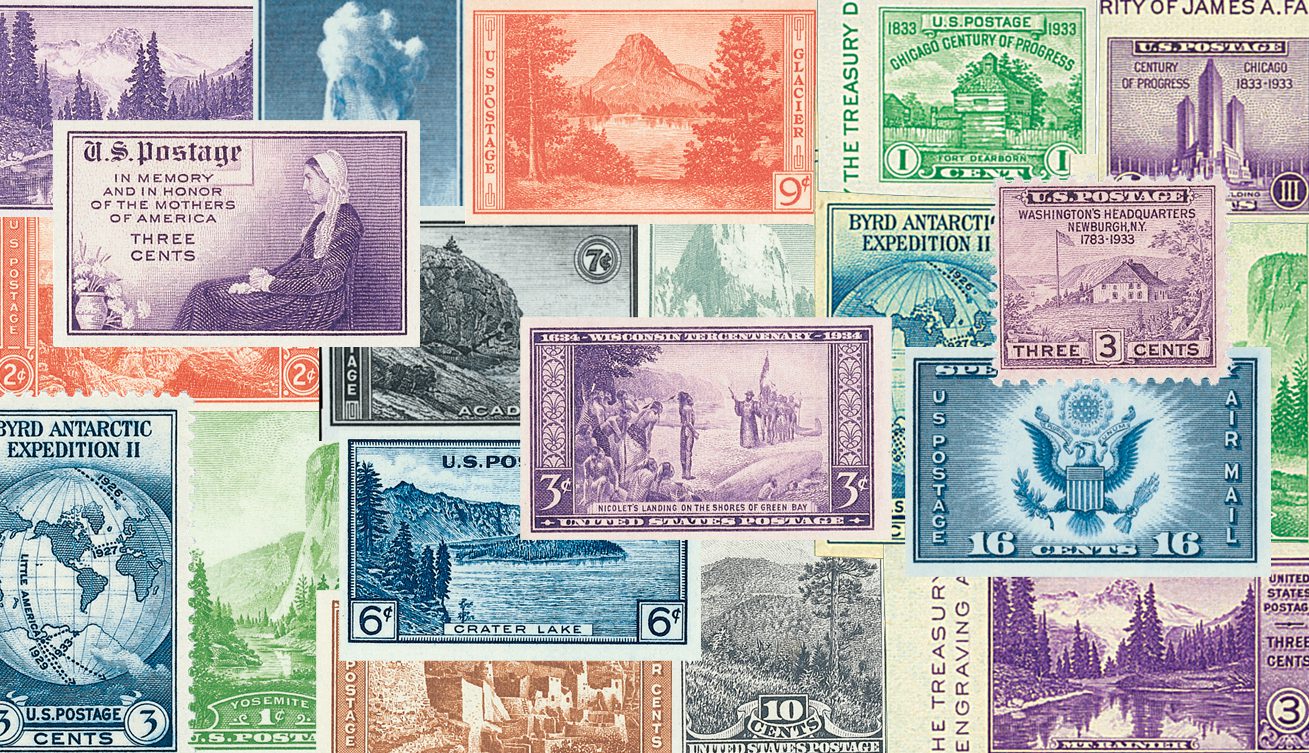Farley’s Follies
On March 15, 1935, the US Post Office reissued 20 stamps known as “Farley’s Special Printings,” which were the result of the biggest stamp scandal of the time – “Farley’s Follies.”

On March 15, 1935, the US Post Office reissued 20 stamps known as “Farley’s Special Printings,” which were the result of the biggest stamp scandal of the time – “Farley’s Follies.”

On December 7, 1941, Japanese bombers attacked American troops at Pearl Harbor, launching the US into World War II.

On November 24, 1954, First Lady Mamie Eisenhower christened the first plane to be designated Air Force One.

On October 29, 1929, the worst stock market crash in history occurred, marking the start of the decade-long Great Depression. FDR’s New Deal and Works Progress Administration helped the US recover.

On October 16, 1940, the US Post Office Department issued a set of three stamps to raise support for a strong national defense. Conceived and designed by President Roosevelt, more than 19 billion stamps were sold, more than any other US stamp series up to that time.

On September 3, 1943, the Allies launched their invasion of Italy during World War II. Part of Operation Husky, it ultimately led to the liberation of Rome in June 1944.

On August 30, 1934, the US Post Office issued its first Airmail Special Delivery stamp. Only in use for a short time, Airmail Special Delivery stamps paid the air postage and special delivery fee with a single stamp.

On August 24, 1935, President Franklin D. Roosevelt signed the Potato Control Law, which led to the creation of short-lived Potato stamps.

On August 14, 1941, Franklin Roosevelt and Winston Churchill issued the Atlantic Charter, which defined their postwar goals for the world. The Atlantic Charter is credited as the inspiration for several international agreements that followed.